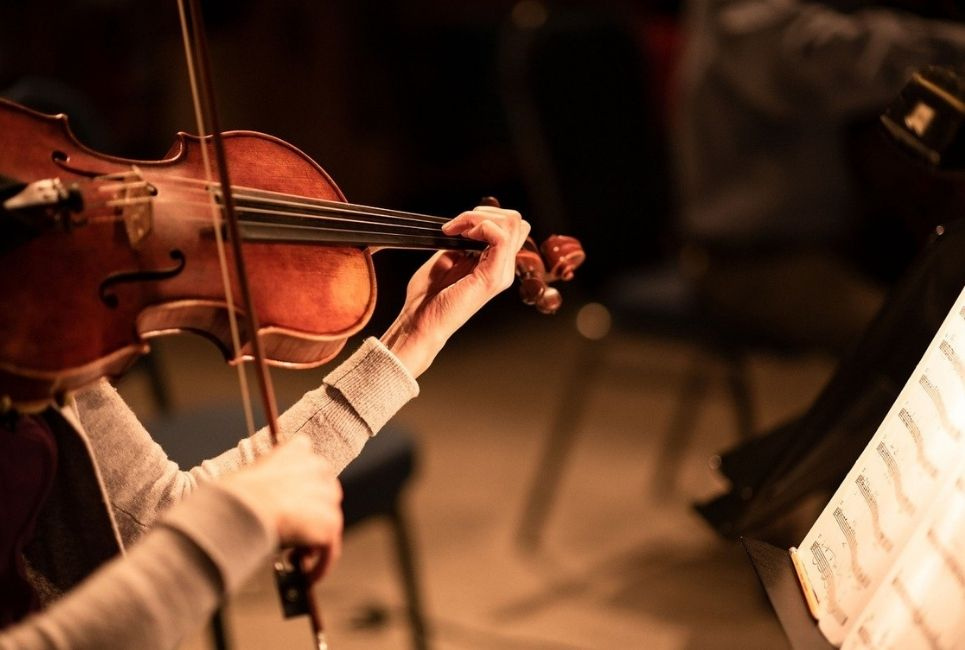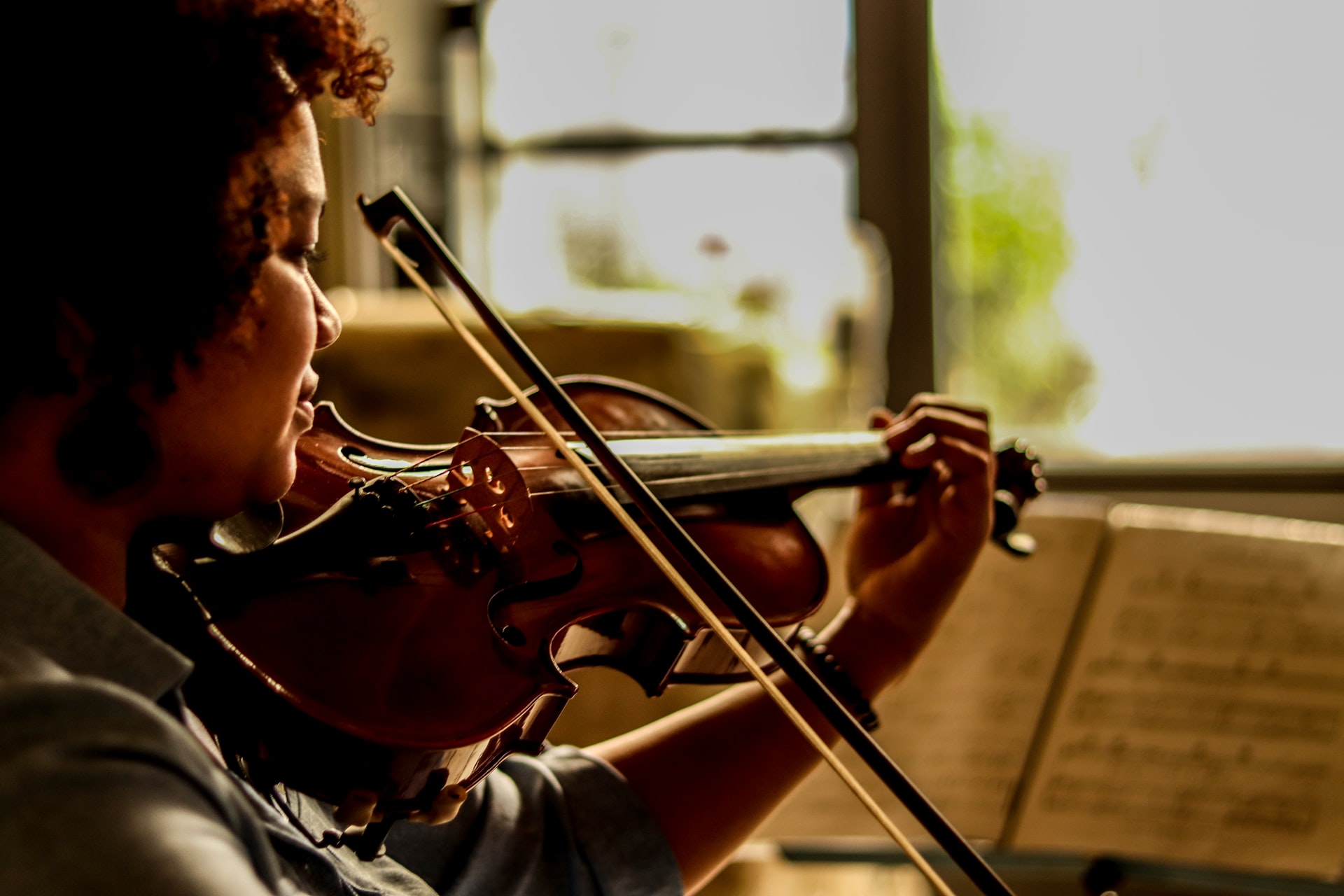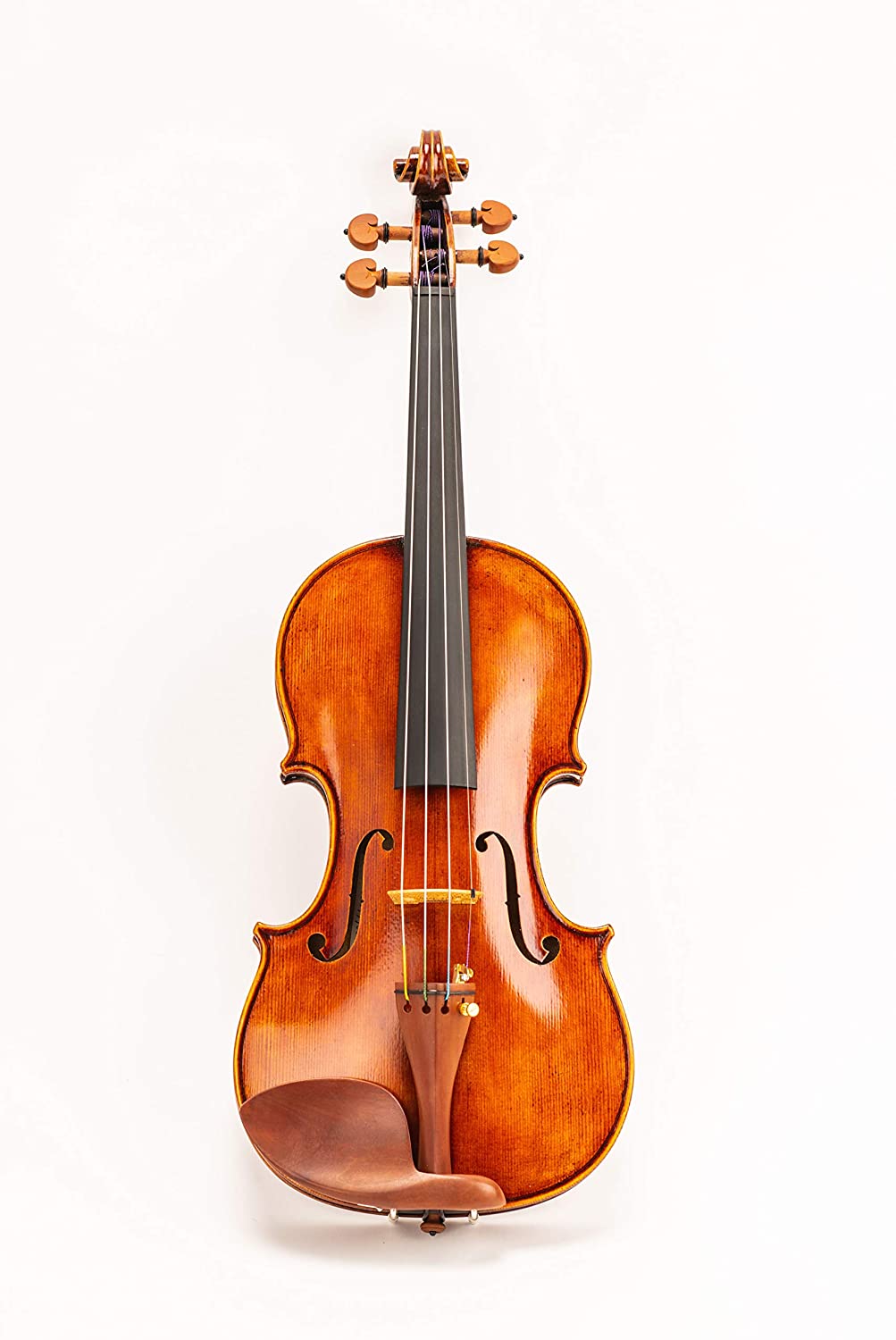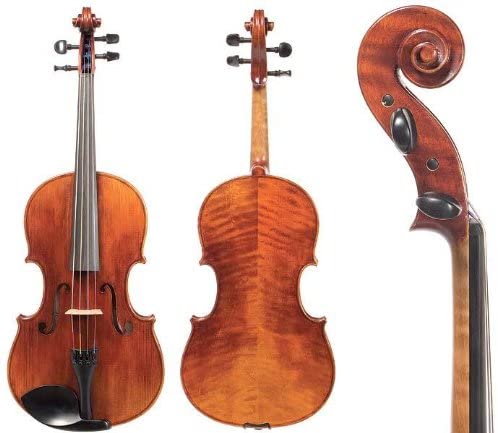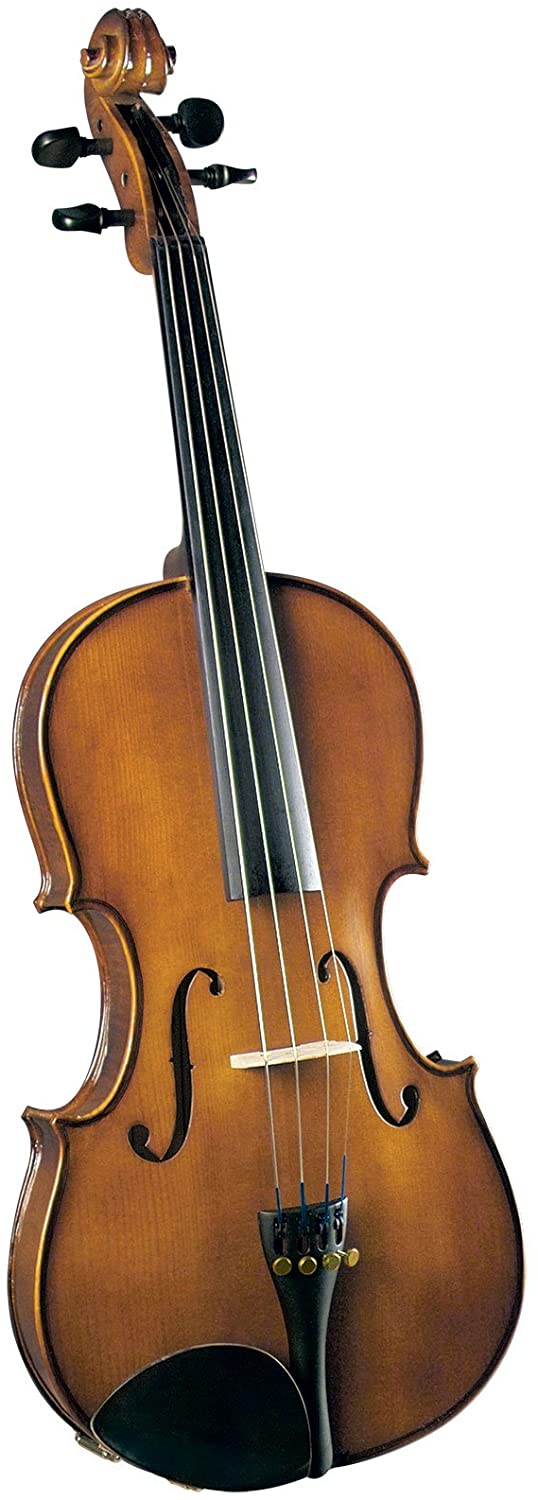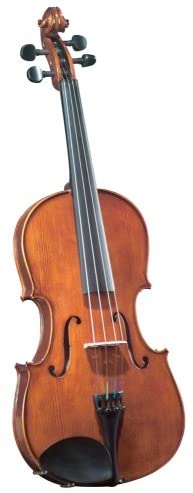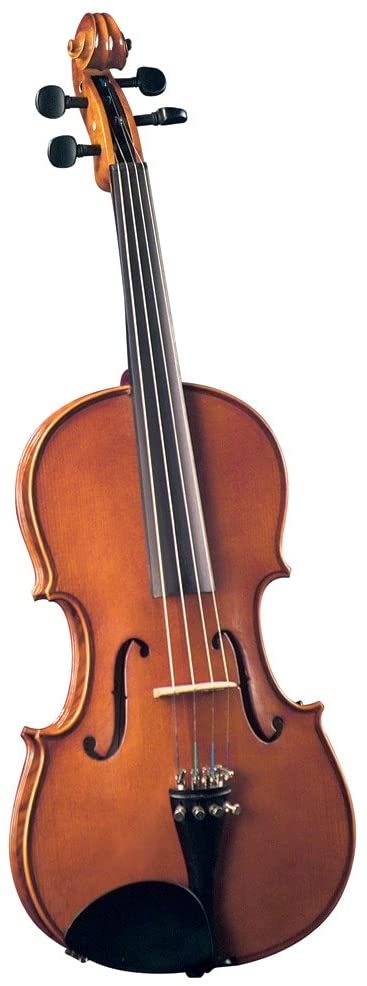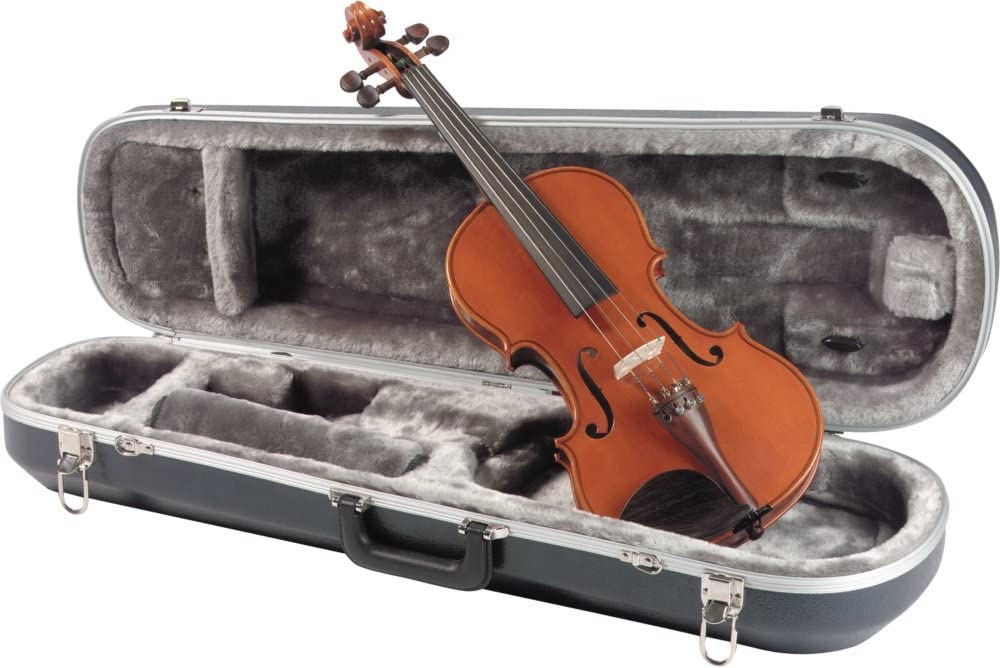- Cecilio CCO 400 Review and Guide - February 21, 2022
- Cecilio CCO 500 Review and Guide - February 17, 2022
- Cecilio CCO 600 Review and Guide - February 9, 2022
Do you want to play in an orchestra but hate the competitiveness of the violin? Consider how to find the best viola so that you can learn another instrument without all of the drama.
The viola is just as important as other string instruments, but choosing the right model is hard. Fortunately, you don’t have to search too much to find the best viola for you.
How To Find the Best Viola
Whether you’re a beginner or need an upgrade, knowing how to find the best viola is crucial. A good viola can make it easier for you to sound good on the instrument.
Unfortunately, the viola’s design can make it difficult to get a nice sound. Luckily, you can do a few things to make sure you get the best viola you can afford.
Use the following tips and tricks when shopping for your first or next viola.
Consider Your Experience
First, you should think about your experience as a musician. Consider if you’ve played the viola or if the instrument is new to you.
If it’s new, consider what other instruments you’ve played, such as the violin. Having prior musical experience, especially on the viola, means you may want to look at an intermediate or professional model.
On the other hand, new players should start with a beginner instrument. That way, you can the get hang of playing before you invest a ton of money into learning music.
Determine Your Size
Like other string instruments, the viola comes in multiple sizes to accommodate players of all ages. However, unlike other string instruments, the viola doesn’t use a fraction system.
The viola size system uses inches to measure the viola, which can make choosing the right size less confusing. But you still need to measure your arms to get an idea of the right size.
For example, someone with arms up to 26 inches long may play on a full 16-inch or 16.5-inch viola. On the other hand, a child may benefit from a viola measuring 12, 13, or 14 inches.
Set a Budget
Another essential step in finding the best viola is knowing how much you can or want to spend. Some violas cost ten times more than other violas, so your budget may help you narrow your search.
Do some research based on the level and size of the instrument you need. Consider the average cost of the models that fit those specifications to figure out how much money you should have.
If you have that money, you can go ahead and shop for a viola now. Otherwise, you may want to save up a little bit more so that you can try more violas without going broke.
Give Your Viola Some Love
Even if you have enough money for a new viola, play your current one, if you own a viola already. If it’s been a while, take your viola to a luthier for some maintenance.
The luthier can get your viola in the best possible playing condition. Sometimes, that’s all it takes for your viola to sound good again, and you may decide you don’t need to upgrade.
Next, give yourself plenty of time to practice your current viola. If you are ready to upgrade, the better you know your instrument, the easier it will be to figure out what you do and don’t like to help choose your next model.
Start Small
Perhaps a trip to the luthier isn’t enough to get your viola in the condition you want. Instead of jumping straight into shopping for a new instrument, make a small change or two.
You can easily switch out the strings for a set from a different company. Then, you’ll be able to get a different sound that you may like better.
Another easy change is to get a new viola bow. A good bow can also have an effect on the way the instrument sounds, and some bows may be easier for you to hold, due to their balance.
Look At Tunes
If you’ve tried just about everything and still don’t like how your viola sounds or feels, you’re ready to upgrade. As a beginner, you don’t have any other option but to acquire a new instrument.
To help you choose the right viola for you, choose a few songs or pieces to play. Look for works that cover the entire range of the viola and that aren’t too hard for you to play.
That way, you’ll be able to compare the violas you test to each other and to your current setup. By keeping the music the same, you can reduce the differences between models and help decide which you like the best.
Test and Compare
Use the music you selected to test and compare as many different violas as you can. Visit a music store or go online to look for violas within your budget.
Some stores let you set up a trial with three or four violas so that you can test them all at once. Then, you can play the same music on each to figure out if you like or don’t like an instrument.
If you can’t try multiple violas in one go, you can still test and compare different models. But you may need to take written notes or record yourself to remember what each one sounds like as you test the next one.
The more violas you can test and compare to each other, the better your chances are of finding one you love. Even if you have to test them separately, you should take your time to eliminate violas until one is left.
Get a Second Opinion
Especially as a beginner, you may not know what you want out of a good viola. Having a teacher or another viola player listen to you play the different instruments is great.
They can give their opinion on how each model sounds, and they can play the instruments for you. That way, you’ll be able to listen and hear how the violas sound to the audience.
Even as an advanced player, getting someone’s opinion is great. You may miss stuff when you play the instrument, and another player can also help you keep from choosing an instrument because of vanity reasons, such as the brand.
Use Recordings
Another great way to narrow your search for the best viola is to listen to recordings. If you can’t try an instrument before you buy it, recordings are an excellent alternative.
You can hear how the instrument sounds when someone else plays it. Then, you can consider if you like that sound and if that model may be the right choice for you.
Alternatively, you can record yourself as you test out different violas. Listen back to those recordings to check for nuances that you may not notice when playing, and that may help you narrow your choices.
If possible, watch some video reviews where the player tests the instrument specifically, rather than simply plays it like they normally would.
Give Used a Try
Used instruments can come with a stigma because some think they aren’t as good as new ones. However, a used viola can be just as good as a newer model.
The wood may have aged more, so it can offer a warm, rich tone. Plus, you may be able to find a used instrument for a fraction of the cost of a new viola.
Whether you’re looking to save money or simply try as many violas as possible, keep the used market in mind. You may not find a used viola you like, but you could find your perfect instrument.
To Rent or Not To Rent
Another decision you may want to make is to rent a viola instead of buying one. A rental is great for a new viola player because you may not want to spend much money on it yet.
You can spread the cost of the instrument out over multiple months. Some rental programs will even apply your rental payments to the cost of the viola if you choose to purchase it later.
However, if you’ve played the viola for a while and know you want to own one, renting doesn’t make sense. Buying a viola is usually better for advanced players since rental programs may not have many violas available.
Keep Shopping
Whether you choose to buy or rent a viola, get a new or used one, you may not find your ideal instrument quickly. When you know how to find the best viola, you know it can take time.
You have to compare multiple instruments, figure out what you do and don’t like, and keep everything under budget. If you get lucky, you may find your perfect match the first time you go shopping.
However, you may need to shop around and go through multiple trials or returns and exchanges. But doing all of that can help you select the right instrument and avoid buyer’s remorse later.
Best Violas
You may know exactly how to find the best viola for you and your needs. But what are some of the best violas on the market?
If you want to purchase your perfect viola, you should consider some of the best brands and models you can find. Then, you’ll be able to narrow your search and keep from wasting time on poor-quality instruments.
I looked for violas using the following criteria:
- Affordability
- Durability
- Sound
Here are some of the best violas you should try when shopping for your next model.
D Z Strad 101
The D Z Strad 101 is an excellent beginner model viola. It makes a fantastic compromise between affordability and good quality, so you get the best of both.
You can choose from all of the main viola sizes, so it doesn’t matter if this instrument is for you or your child. This viola uses maple and spruce for the body to help offer a warm sound.
It features a high-gloss lacquer finish to keep it looking great for a long time. Plus, you get rosin, a shoulder rest, and a bow, so you have everything you need to start playing.
Pros
- Great for beginners
- Affordable
- Sounds good
Cons
- Not for professionals
D Z Strad 400
Moving up to the intermediate level, the D Z Strad 400 is another fantastic viola. This model is a handmade one, so it offers more unique qualities than the student model.
Because of that, you may want to try multiple instruments at this level. That way, you can figure out which of the 400s is the right option for you.
It features a similar design and the same materials as the 101, and it comes in different sizes. Unfortunately, it’s not available in 12 or 13 inches, so it’s not the best for younger players.
Pros
- Great sound
- Unique qualities
- Suitable upgrade
Cons
- Not for younger or smaller players
D Z Strad 700
Another amazing model from the same brand is the D Z Strad 700. This viola is perfect for professionals and advancing students who need a bit more oomph than an intermediate viola offers.
You get everything you need, including rosin, strings, a bow, and a shoulder rest. The viola comes in sizes ranging from 14 to 16.5 inches, so you can select the size that’s comfortable for you.
It uses maple and spruce like many other violas, so you’ll get a warm tone. While it’s a new instrument, its design resembles older models, which is great if you want to look and sound good in a group.
Pros
- Great materials
- Sounds nice
- Perfect for professionals
Cons
- A bit expensive
Cremona SVA-130
Let’s move back to the student viola level with the Cremona SVA-130. This viola uses spruce and maple, and it has a good finish to make it look and sound good.
It comes with a chinrest and an oiled neck that make playing comfortable for beginners. Sizes available include 12, 13, 14, and 16 inches, which can also help make the viola comfortable.
The viola is lightweight, which can also help you get started as a beginner. And it’s more affordable than similar models, so it’s perfect for anyone on a tight budget.
Pros
- Great for beginners
- Affordable
- Lightweight yet durable
Cons
- The strings aren’t that great
Cremona SVA-175
The Cremona SVA-175 is another amazing student model viola. It has many of the same features and designs as the 130 model, but it costs a bit more.
This viola has a darker finish, so you can blend in with the rest of the viola section and orchestra. You don’t need to be super strong to hold the lightweight viola, which is great as a beginner.
Like the other model, this comes in different sizes ranging from 12 to 15 inches. If you want to get a viola that will last you for a while, you can’t go wrong with this one.
Pros
- Great for students
- Lasts a while
- Sounds good
Cons
- Bow is low quality
Cremona SVA-200
If you want something a little better than the prior model, check out the Cremona SVA-200. This is yet another student viola, but it offers plenty of great features.
There’s a dark finish that makes the viola look good, while spruce and maple make for a warm sound. Cremona follows national standards for music education, so you can’t go wrong with buying this for school orchestra.
The fine tuners are easy to use, so you can keep the instrument in tune. And you get everything you need, such as a bow, strings, and rosin to help you start playing today.
Pros
- Looks and sounds good
- Great for beginners
- Different sizes
Cons
- Expensive for what it is
Yamaha AVA5
If you’re looking to upgrade from a student viola, check out the Yamaha AVA5. This viola is handmade and perfect for advancing students of all sizes.
The maple and spruce offer a fantastic sound, and the oil varnish makes the viola look good. You get a bow and some rosin so that you don’t have to pay extra for essential accessories.
Everything comes in a lightweight case to protect your gear when you aren’t playing. While it’s not the cheapest viola, it’s of excellent quality, and it can last you a while.
Pros
- Great upgrade
- Comes with what you need
- Looks and sounds good
Cons
- A little expensive
FAQs About How To Find The Best Viola
Answer: The viola can seem easy to play at the start, especially if you’ve played another string instrument. However, it takes time and practice to get a good quality sound on the viola.
For the viola to have the same acoustics as the violin and cello, the viola would need to be much bigger, making a good sound hard to achieve. You also have to learn how to read the alto clef, which no other instrument uses.
If you really want to learn to play the viola, though, you can make it happen. Having the motivation to learn will make practicing much easier.
Answer: Because of that difference in acoustics, a good viola can minimize the difficulties of getting a good sound. You shouldn’t give yourself more problems than necessary.
Instead of choosing the cheapest viola or first viola you find, shop around. Then, you can find a viola that works well with you and that you enjoy playing.
Answer: Selecting the right size can make a difference in how your viola feels and sounds. You can use a size chart and measure the length of your arms, then match that length to a size on the chart.
However, the most effective way to choose the right size is to test violas in person. Then, you won’t have to worry about getting the wrong size, and you can make sure the instrument feels comfortable for you.
Answer: Violas can cost anywhere from a few hundred dollars to a few thousand dollars. The price varies based on the level and quality of the instrument as well as if it’s handmade or machine-made.
Luckily, you don’t need the most expensive viola to learn and sound good. But if you don’t spend that much, you might want to lower your expectations so that you don’t disappoint yourself.
Answer: The viola is much less competitive than the violin or the cello. That means you have a better chance of getting a spot in a school, community, or professional orchestra.
You also have a better chance of landing the top spot in an ensemble. And depending on where you live or go to school, you may be the only viola player, so you might land plenty of other performance opportunities.
Answer: The viola can play notes from the C below middle C (C3) to the E above the treble clef (E6). When you read viola music, you will read the same notes that you hear, meaning the instrument is in concert pitch.
However, viola music uses alto clef for the lower and middle registers and treble clef for the higher notes. The alto clef isn’t common outside of the viola, but it’s an essential part of learning to play the instrument.
Answer: The viola is larger than the violin, but you play both instruments by resting them on your left shoulder. Violas and violins share three strings: G, D, and A.
However, the viola has a lower C string that lets you play a perfect fifth lower than on the violin. But the viola doesn’t have the E string that you’ll find on a violin. Violas also usually play a more harmonic role, while violins often have the melody.
Answer: The viola is smaller than the cello, and you do hold the two instruments differently. While you rest the viola on your shoulder, you place the cello between your legs.
Violas and cellos do have the same notes for each open string, though the pitches are an octave apart. The viola also isn’t as much of a solo instrument as the cello.
Final Note On How To Find The Best Viola
Learning how to find the best viola is almost as important as learning to play the instrument itself. The right viola can make playing and getting a good sound a lot easier.
So give the D Z Strad, Cremona, and Yamaha violas a try. That way, you’ll be able to start or improve your playing on the right foot.
Looking for more interesting readings? Check out:

